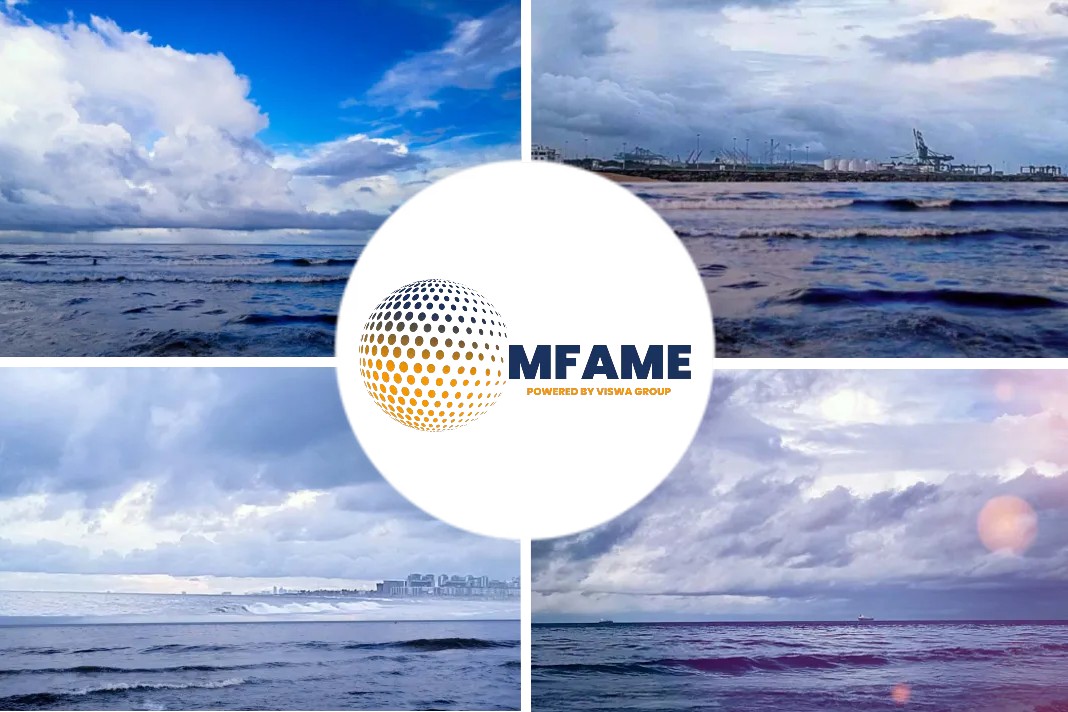- IMO-compliant bunker fuel are available at Japan’s 14 refineries.
- Around 100,000 b/d low sulfur bunker fuel demand expected
- HSFO supplies to be maintained to serve owners/operators installing scrubbers on their ships, as Japan will support the use of open-loop scrubbers aboard ships.
Japanese refineries are ready to supply 0.5% sulfur bunker fuels, well ahead of the International Maritime Organization’s global sulfur mandate for marine fuels, reports Platts.
Sulphur regulation
The IMO will cap global sulfur content in marine fuels at 0.5% on January 1, down from the current 3.5%.
This applies outside the designated emissions control areas, where the limit is already 0.1%.
IMO 2020 compliant fuels availability
Currently, IMO 2020 compliant bunker fuels still represent only a fraction of Japanese refiners’ entire bunker fuel supply.
The proportion of cleaner fuels is expected to rise in the coming months as demand accelerates.
Low sulfur IMO 2020 compliant fuels are now available at 14 out of the 22 refineries, with three more refineries expected to be ready before year-end.
LSFO and HSFO supply
According to Platts, including demand for domestic coastal vessels, Japan’s potential LSFO demand for bunkering is estimated to be around 100,000 b/d.
While Japanese refiners are ramping up LSFO production, they are still likely to maintain HSFO supplies to serve owners/operators installing scrubbers on their ships.
Japan has decided it will support the use of open-loop scrubbers aboard ships.
Based on its environmental assessment, Japan will not ban discharge of washwater from open-loop scrubbers in its waters, though many ports worldwide are implementing such bans.
Infrastructure
JXTG
- JXTG Nippon Oil & Energy, the largest Japanese refiner, started supplying 0.5% sulfur bunker fuel oil from its six refineries in Japan as well as from an oil terminal in Niigata in the country’s northwest as of October 1.
- JXTG’s supply of 0.5% sulfur IMO-compliant bunker fuel oil is now available from its 145,000 b/d Sendai refinery in the northeast, 270,000 b/d Negishi refinery in Tokyo Bay; 135,000 b/d Sakai refinery, 320,200 b/d Mizushima refinery, 120,000 b/d Marifu refinery in the west; and its 136,000 b/d Oita refinery in the south west.
- The refiner also plans to start supplying IMO-compliant bunker fuels from its 197,100 b/d Kashima refinery in the east coast and its 129,000 b/d Chiba refinery in Tokyo Bay.
- JXTG’s 0.5% sulfur bunker fuel oil is only available for ocean liners at its Sendai and Marifu refineries, with Kashima, Chiba, Negishi, Sakai, Mizushima and Oita refineries supplying IMO compliant fuel oil for both ocean liners and coastal vessels.
- In addition to the Niigata oil terminal, JXTG also plans to start supplying IMO-compliant bunker fuel oil at its five other oil terminals in Muroran in the north, Sakaiminato in the west, as well as Kitakyushu, Nagasaki and Kagoshima in the southwest (but all of its IMO-compliant bunker fuel supply is available only for coastal vessels at the six oil terminals).
Idemitsu Kosan
- Idemitsu Kosan, also on October 1, started supplying IMO-compliant bunker fuel oil from its 190,000 b/d Chiba refinery in Tokyo Bay, the 160,000 b/d Aichi refinery and 255,000 b/d Yokkaichi refinery in central Japan as well as at the 120,000 b/d Seibu refinery in western Japan.
- Japan’s second largest refiner also started supplying IMO-compliant bunker fuel oil at its Tokuyama complex — a former refinery, which currently supplies energy and chemical raw materials — in western and southwestern Japan.
- The company plans to start supplying IMO-compliant bunker fuel oil a the 150,000 b/d Hokkaido refinery in northern Japan in December.
Fuji Oil
- Fuji Oil, in which Idemitsu Kosan holds a 6.57% stake, also started supplying 0.5% sulfur bunker fuel oil at its sole 143,000 b/d Sodegaura refinery in Tokyo Bay in October.
Cosmo Oil
- Cosmo Oil started its 0.5% sulfur bunker fuel oil supply as of October 1 at its 177,000 b/d Chiba refinery in Tokyo Bay, its 86,000 b/d Yokkaichi refinery in central Japan, and its 100,000 b/d Sakai refinery in western Japan.
Trade flows
- Japan’s current demand for low sulfur bunker fuel oil comes mainly from major Japanese shipowners, who had secured term contracts.
- Mitsui & Co. Petroleum Ltd. supplied its maiden marine fuel 0.5% bunker of about 300-400 mt at Osaka/Kobe in western Japan in the week ended October 5, according to traders.
- Toyota Tsusho will be delivering its first low sulfur bunker fuel oil cargo of 600 mt for the Grand Mercury, a Toyota roll-on/roll-off ship, at Toyohashi in central Japan around October 21, following its purchase of the cargo from Idemitsu Kosan.
- JXTG and Cosmo Oil had suspended the supply of 1.0% sulfur A-fuel oil — a blend of gasoil and fuel oil in a 90:10 ratio — in the domestic rack and waterborne markets as of September 30 to shift their focus to supply IMO-compliant bunker fuels.
Marine fuel Prices
- Reflecting Japan’s growing preference for clean marine fuel, the spread between Japan delivered Marine Fuel 0.5% bunker and Mean of Platts Singapore Marine Fuel 0.5% averaged $136.46/mt month to date.
- In comparison, the premium for Japan Delivered Marine Fuel price marker averaged $76.30/mt in September, $71.14/mt in August and $38.39/mt in July.
- The spread between Japan delivered Marine Fuel 0.5% and 380 CST Fuel Oil hit a record high at $199.50/mt on October 8.
- The differential remained close to that level Thursday, assessed at a premium of $197.50/mt.
- Mitsui and Co. Petroleum Ltd. were the first to begin bidding for spot Marine Fuel 0.5% bunker during the Platts Market on Close assessment process.
- It submitted a bid for 800-900 mt of Marine Fuel 0.5% for delivery over October 18-20, at $587/mt on Thursday.
Did you subscribe to our daily newsletter?
It’s Free! Click here to Subscribe!
Source: Platts



























